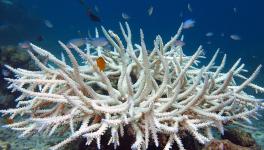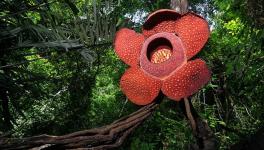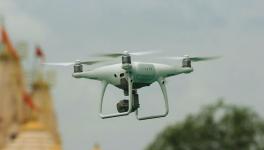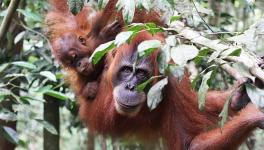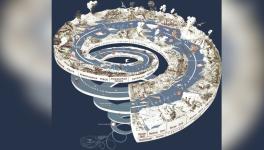Healthy Ecosystems Need Birds, but Billions Fatally Strike Our Windows Every Year
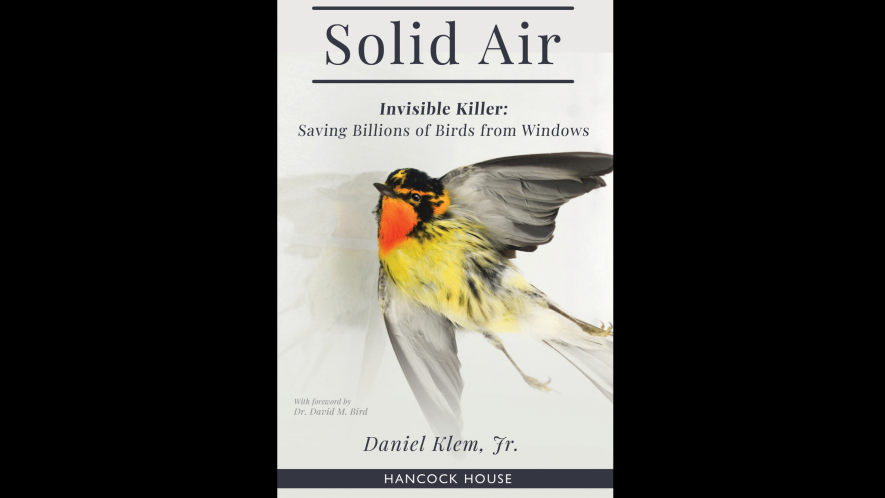
Glass windows have existed since as long ago as 290 CE, if only in a limited supply of small sheets. It seems fair to say that window glass has enriched human aesthetic, cultural, physiological, and psychological well-being for at least 16 centuries. Even one small pane is enough to admit a bit of the sun’s light and warmth into an enclosed space. The tendency of builders—and the willingness of their clients—to use this product in large quantities apparently resulted from the need of human society to seek safety within the solid walls of dwellings away from the reach of marauders. Sheet glass permitted viewing the out-of-doors from the comfort and protection of indoors. In the Middle Ages, ecclesiastical interests led to the lavish use of both tinted and clear panes. These windows were used in the cathedrals of Europe and then in the domestic dwellings of the rich, especially in Tudor England. The technical ability to manufacture large sheets of glass was developed at the turn of the 20th century. With the building boom that followed World War II, 1945 to the present, flat glass has become a prominent, even dominating, construction material used in the majority of human dwellings and other structures. In 2009, 6.6 billion square miles (17 billion square kilometers) of flat glass was manufactured worldwide, which is about the area of the U.S. state of Delaware, at a value of $23.54 billion. The amount of glass used in construction has continued to increase annually.
The history of window glass as a source of bird fatalities is similarly ancient and progressive. The confirming obituaries, however, do not begin to appear in the literature until well after 1800, with the development of modern ornithology in Europe and North America. Thomas Nuttall published the first scientifically documented window fatality in his 1832 book A Manual of the Ornithology of the United States and of Canada. He described how a hawk in pursuit of prey flew through two panes of greenhouse glass only to be stopped by a third. The next account was by Spencer F. Baird and his colleagues Thomas M. Brewer and Robert Ridgway in Volume 1 of their 1874 three-volume work A History of North American Birds. They described how a shrike struck the outside of a clear pane while attempting to reach a caged canary.
…
To put the scale of losses by various human-related bird killers in perspective, my speaking and writing, starting in the late 1980s, included “sound bite” tactics. The purpose was to capture the attention of anyone who might be moved to listen and take action. One such tactic involves comparing bird losses at windows to those from higher-visibility oil spills. Prominent oil spills that have captured international attention as environmental disasters include the Exxon Valdez disaster and the more recent Deepwater Horizon fire and spill in the Gulf of Mexico. By any assessment, the Exxon Valdez oil spill was a horrific environmental disaster. The oil tanker Exxon Valdez released 260,000 barrels of crude oil into Alaska’s Prince William Sound on March 24, 1989. The spill was estimated to have killed 100,000 to 300,000 marine birds. The 2010 Deepwater Horizon spill is estimated to have caused as many as 2 million bird deaths. By contrast, in the 1970s my original and lowest estimate of losses from window collisions in the U.S. alone was 100 million bird kills a year. This minimum window-kill number equals the toll from 333 annual Exxon Valdez disasters and 100 Deepwater Horizon oil spills every year. Yet those writing in the media about assaults on the Earth’s environment are either unaware, unconvinced, or willing to overlook the horrific loss of bird life occurring at windows.
…
In 2013, expressing concern and emphasizing the interconnectedness of life, Travis Longcore and P.A. Smith, writing in the journal Avian Conservation and Ecology, warned that avian deaths from windows and other human-associated mortality factors pose a growing deleterious effect on the world’s ecosystems and the goods and services birds provide them.
In a money-centered world, those goods and services are getting increased attention, especially considering what it might cost to have humans try to do the same work. Pest control is one service birds provide that contributes to productive yields of valuable crops such as coffee and grapes. They also provide public health benefits such as consuming insect disease vectors and scavenging the dead. They play a role in pollination and seed dispersal and provide high-quality fertilizer from seabird guano. Birds also serve as ultra-sensitive indicators of environmental health on the local, regional, and global levels. The “web of life” that Alexander von Humboldt described as essential to the health and very existence of humankind is as relevant today as it was when he wrote about it two centuries ago. Like every other living being, birds are an essential part of that complex, interacting super-organism that encompasses all life.
One of the most dramatic pest control events occurred in 1848, in what is now the city of Great Salt Lake, Utah. To many, the event was a true miracle. California gulls (Larus californicus) descended on the so-called “Mormon crickets” (Anabrus simplex), an insect that is not actually a cricket but a katydid that grows to 8 centimeters (3 inches) and voraciously consumes vegetation. Crops and even their own are on the menu during their swarming phase that can see them move across 2 kilometers (1.2 miles) of agricultural fields in a day. These gulls were credited with saving about 4,000 Mormon pioneers by eating the katydids and preventing them from consuming their second harvest. As a grateful tribute, a monument to the California gull today stands prominently in Salt Lake City, commemorating the life-saving service of this bird to people.
The services of mosquito-eating birds contribute to limiting the spread and prevention of malaria, yellow fever, and other diseases. This is a particularly important aid in tropical climates, where several species, but especially martins and swallows, have protected Indigenous people from the earliest times until now. Vultures the world over are specifically adapted to removing the dead and with them the accompanying organisms that spread diseases among humans and other animals. At the turn of the 21st century, the dramatic disappearance of vultures in India virtually eliminated the service they provided in scavenging livestock carcasses. The consequence of this loss was an estimated 48,000 human deaths between 1992 to 2006 from rabies and a cost of $34 billion to the national economy. Other vulture-connected health-related costs of $24 billion were linked to the increase in scavenging feral dogs and rats that carry rabies and bubonic plague, respectively, in addition to other human-susceptible diseases.
Hummingbirds offer pollinating services for commercial flowering plants and many human foods. The dispersal of seeds by fruit-eating birds ensures reforestation and with it ecological succession that consists of a chain of changes in habitat that provides homes to variously adapted life—including diverse bird species and the food and shelter they require to survive and sustain healthy populations.
One practical service birds provide is preying on insects across the boreal and temperate forests of North America. Given the number of species preying on insects, collectively the presence of birds can have meaningful consequences for the health of the trees in these forests. Martin Nyffeler and his colleagues, writing in the journal the Science of Nature in 2018, estimated that the world’s insectivorous birds annually consume 400 to 500 million metric tons of insects per year. Forest birds account for 70 percent of this amount, or greater than 300 million tons a year. Especially for forests, the ecological and economic importance of birds eating harmful insect pests has tangible worldwide value.
This excerpt is from Solid Air: Invisible Killer—Saving Billions of Birds from Windows by Daniel Klem Jr. (Hancock House, 2021) and was edited and produced for the web by Earth | Food | Life, a project of the Independent Media Institute.
Daniel Klem Jr. is the Sarkis Acopian Professor of Ornithology and Conservation Biology at Muhlenberg College.
Get the latest reports & analysis with people's perspective on Protests, movements & deep analytical videos, discussions of the current affairs in your Telegram app. Subscribe to NewsClick's Telegram channel & get Real-Time updates on stories, as they get published on our website.










